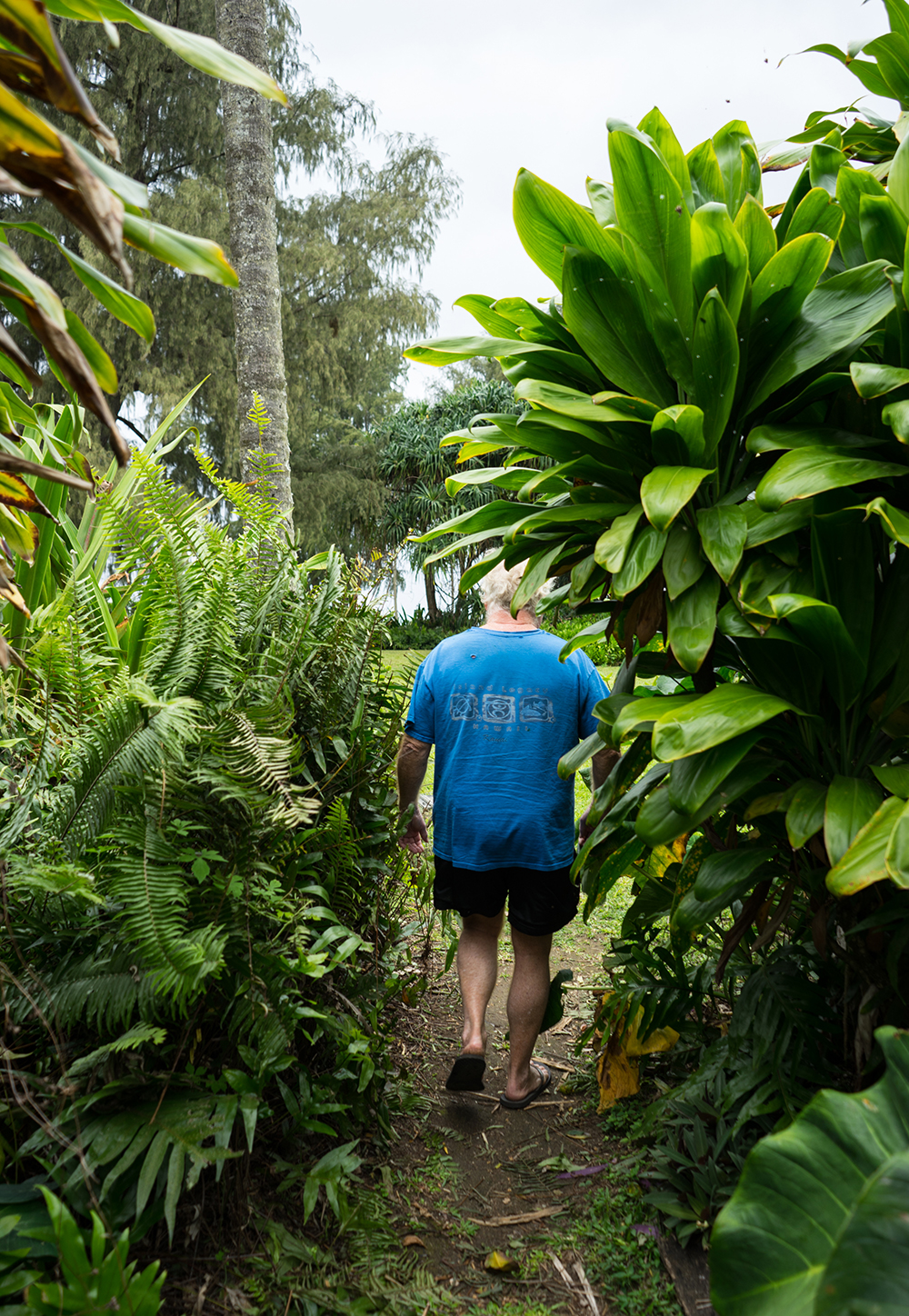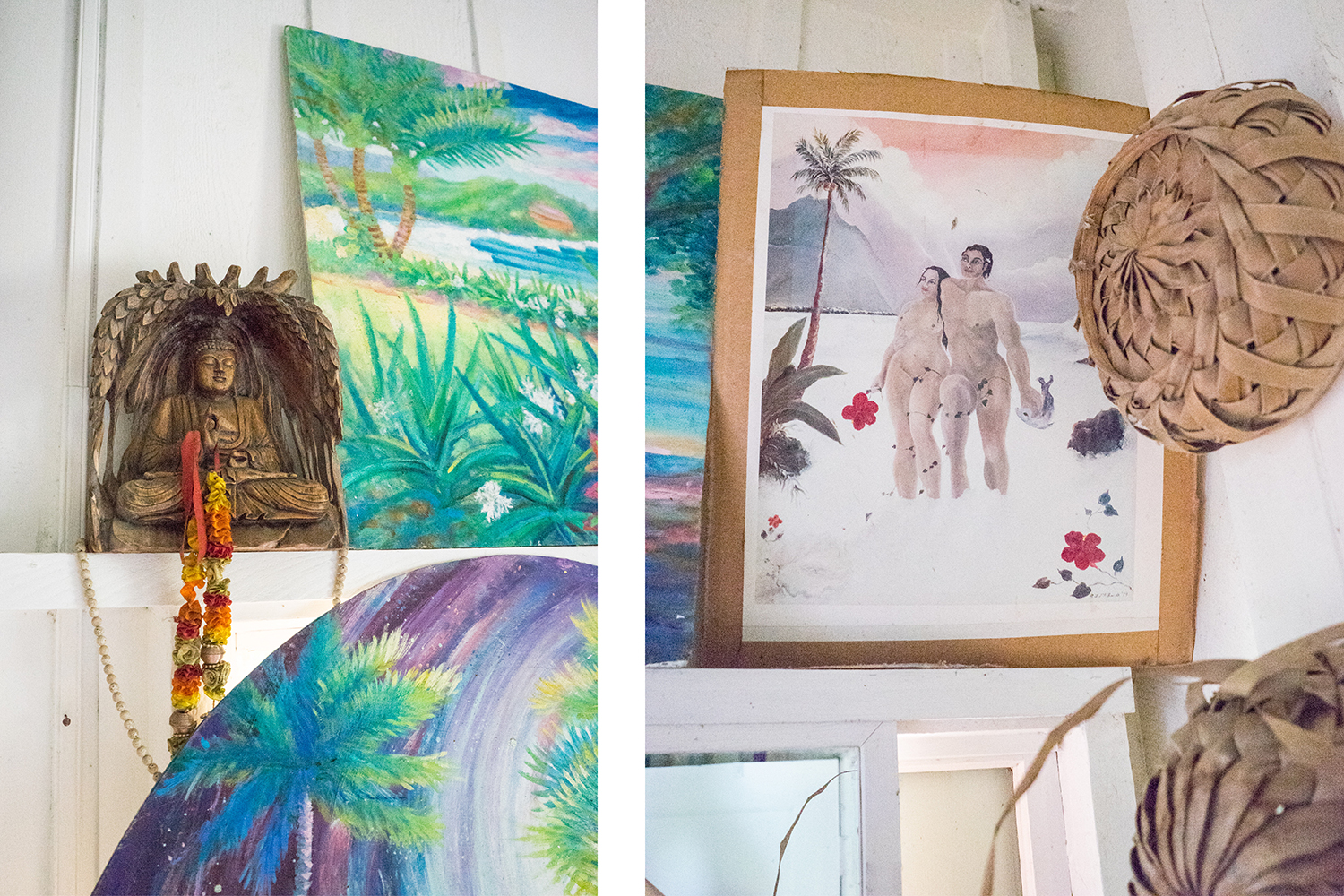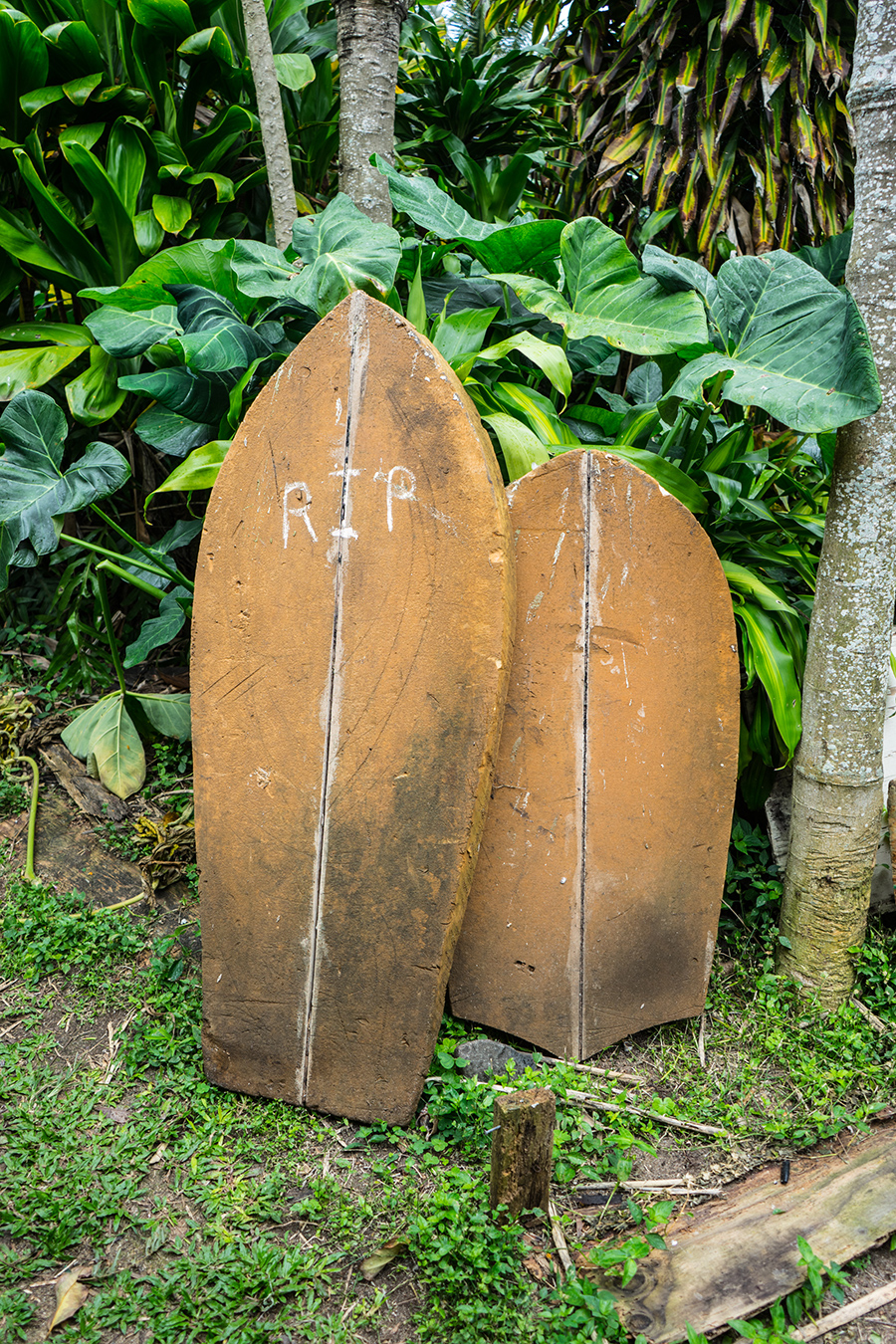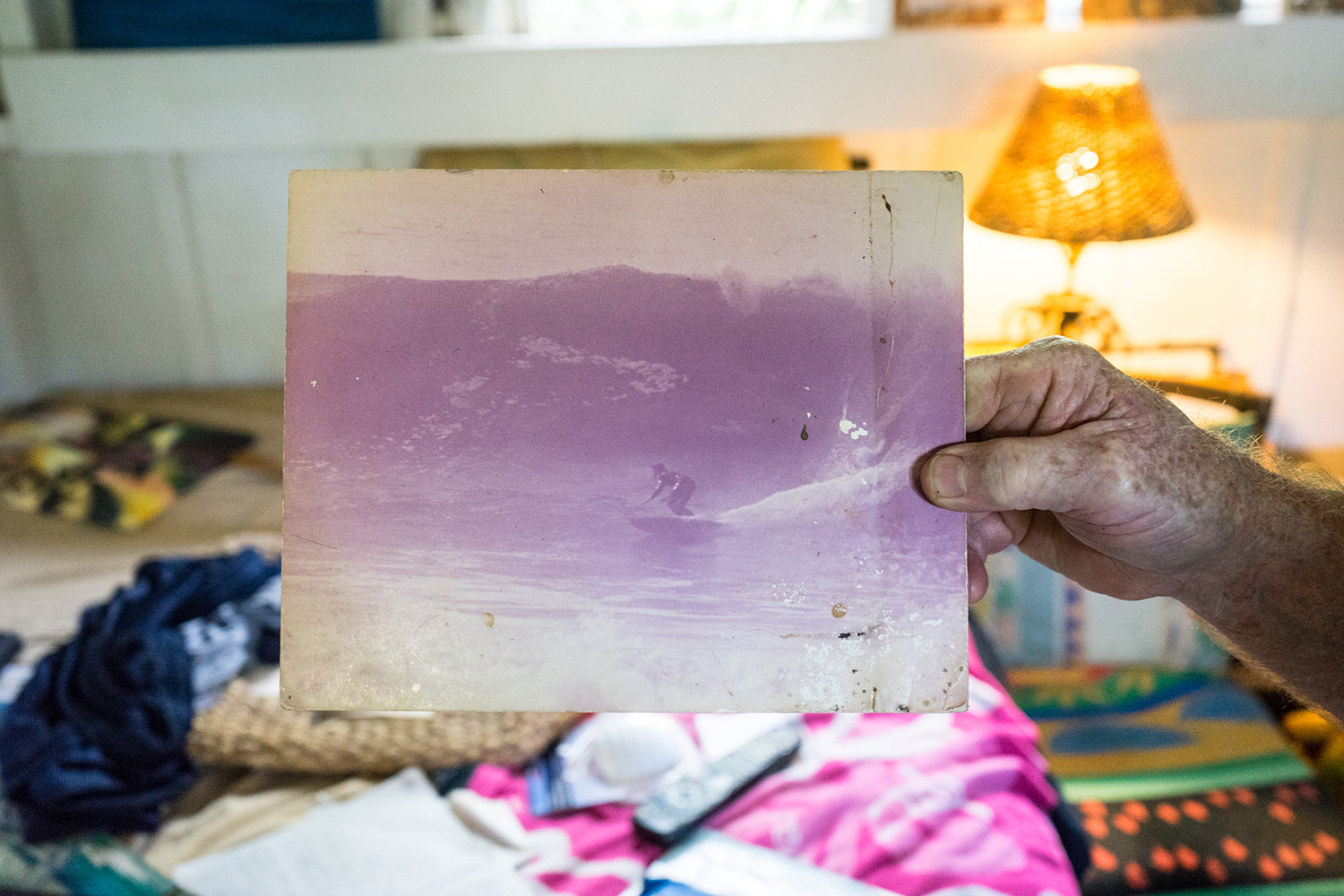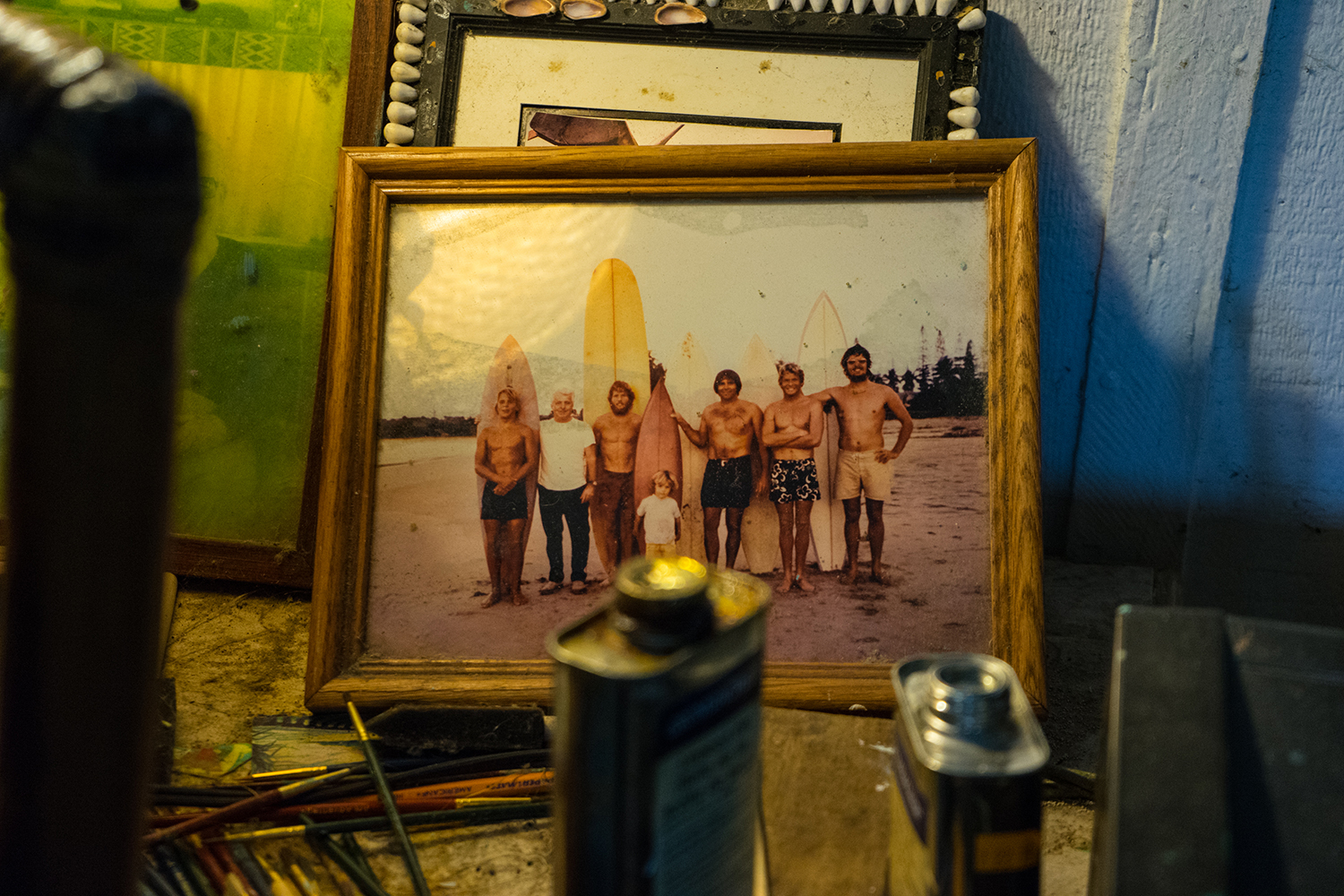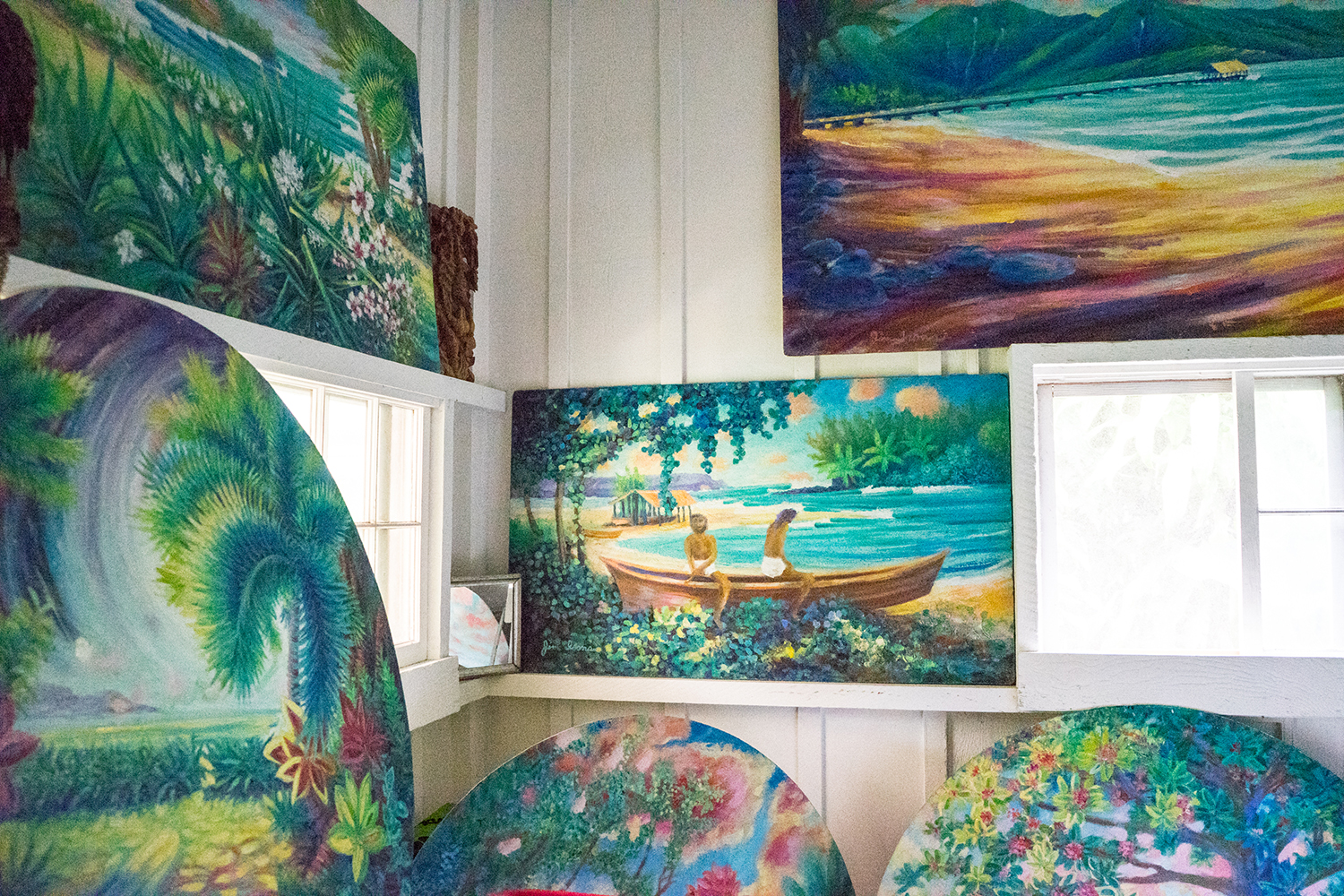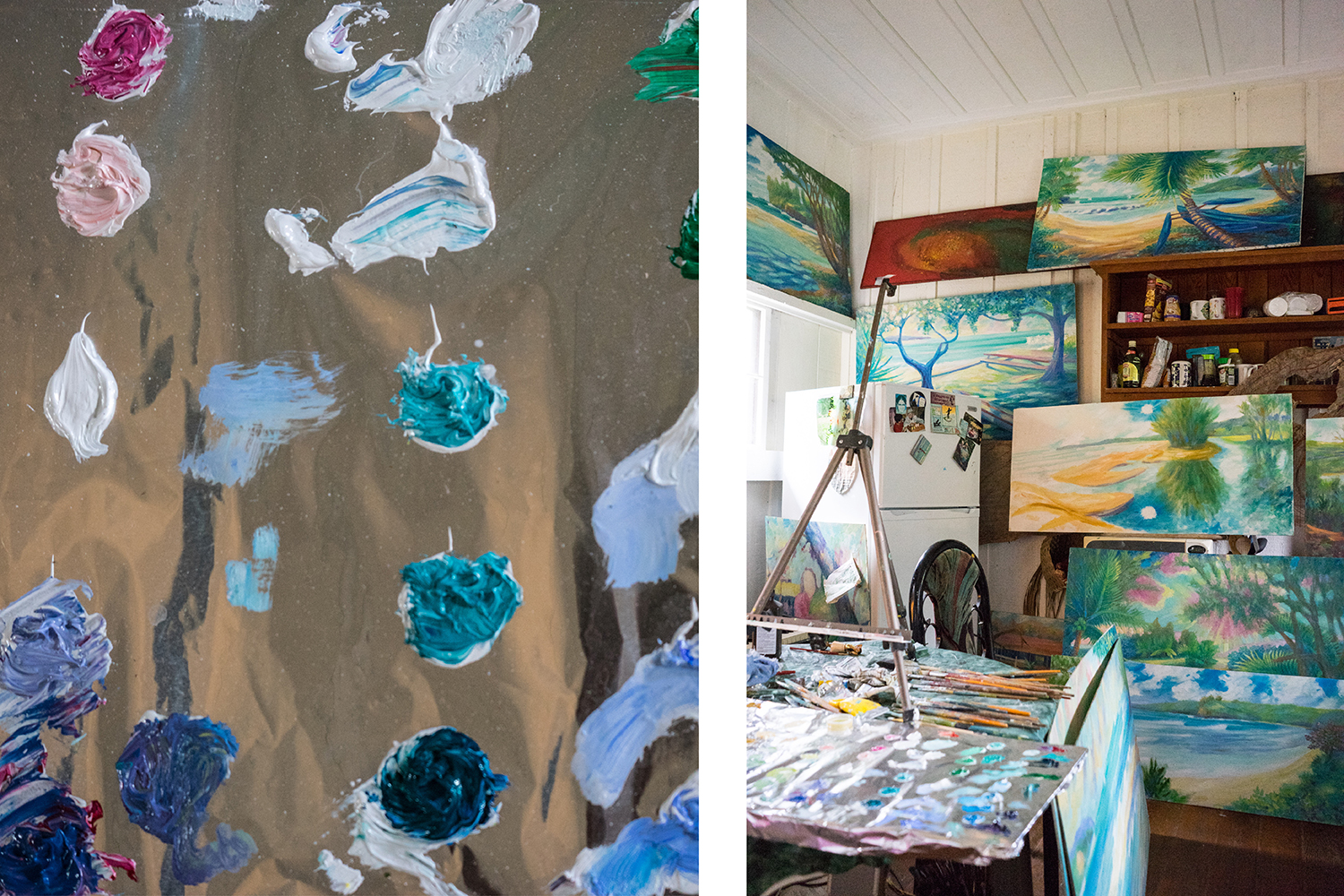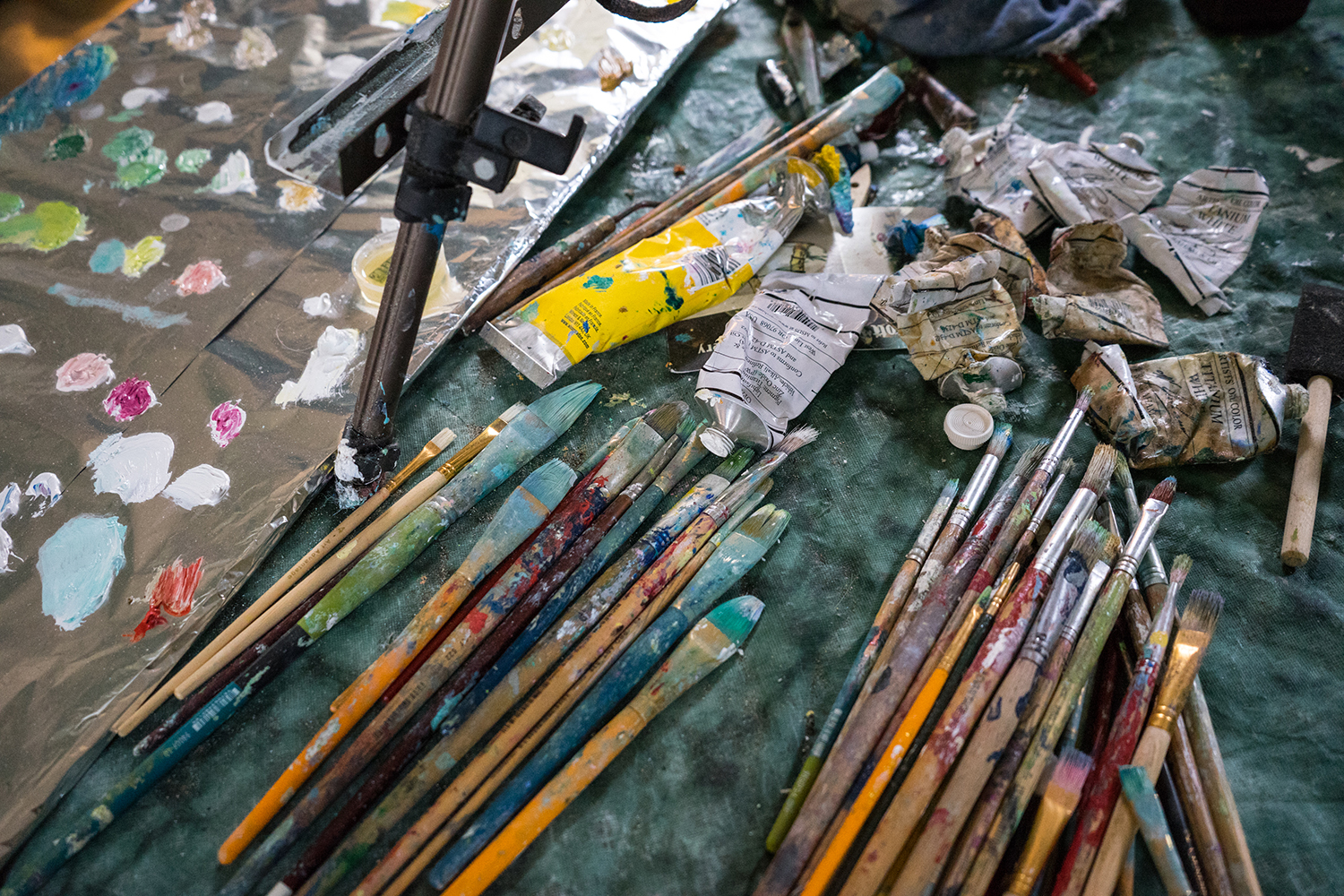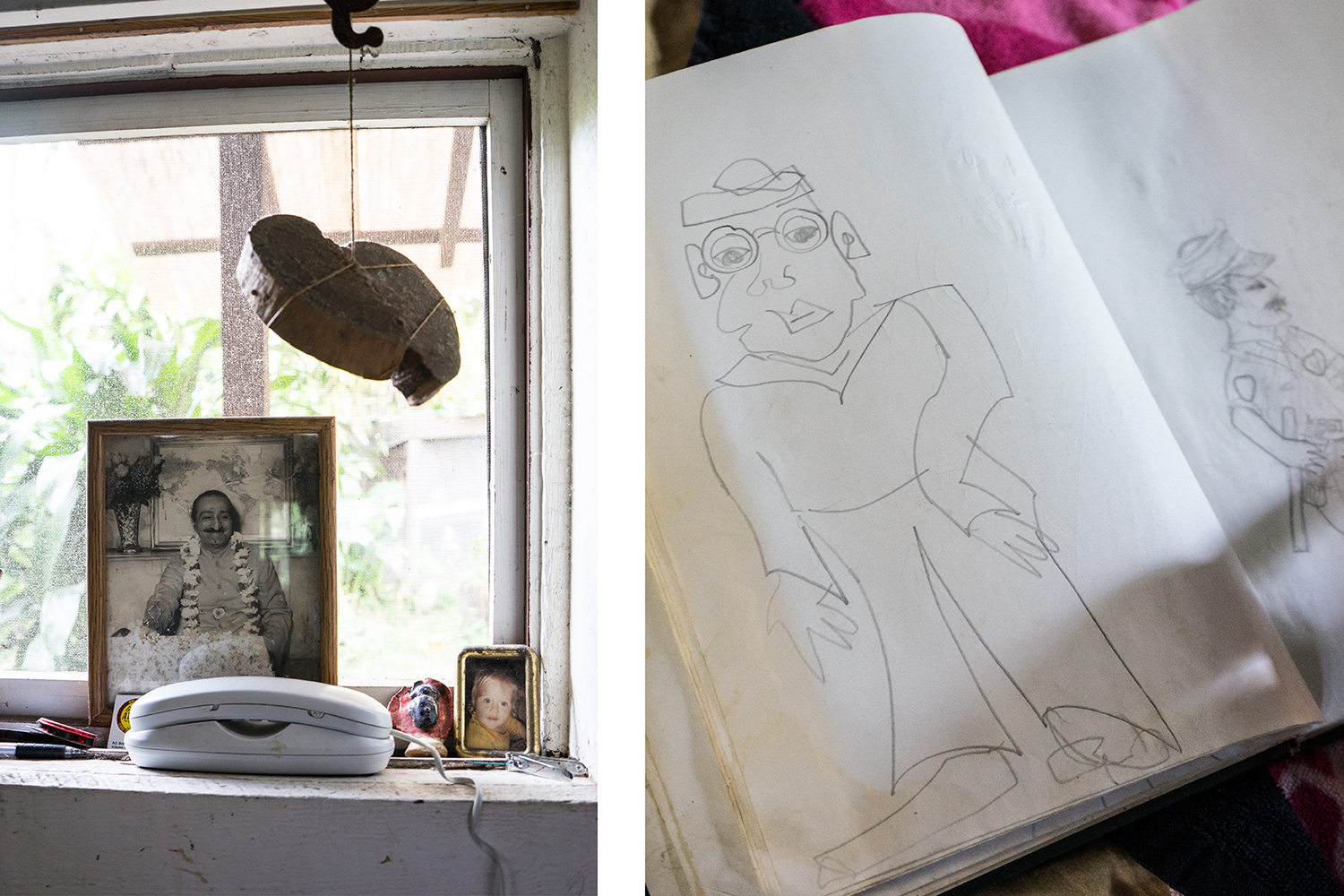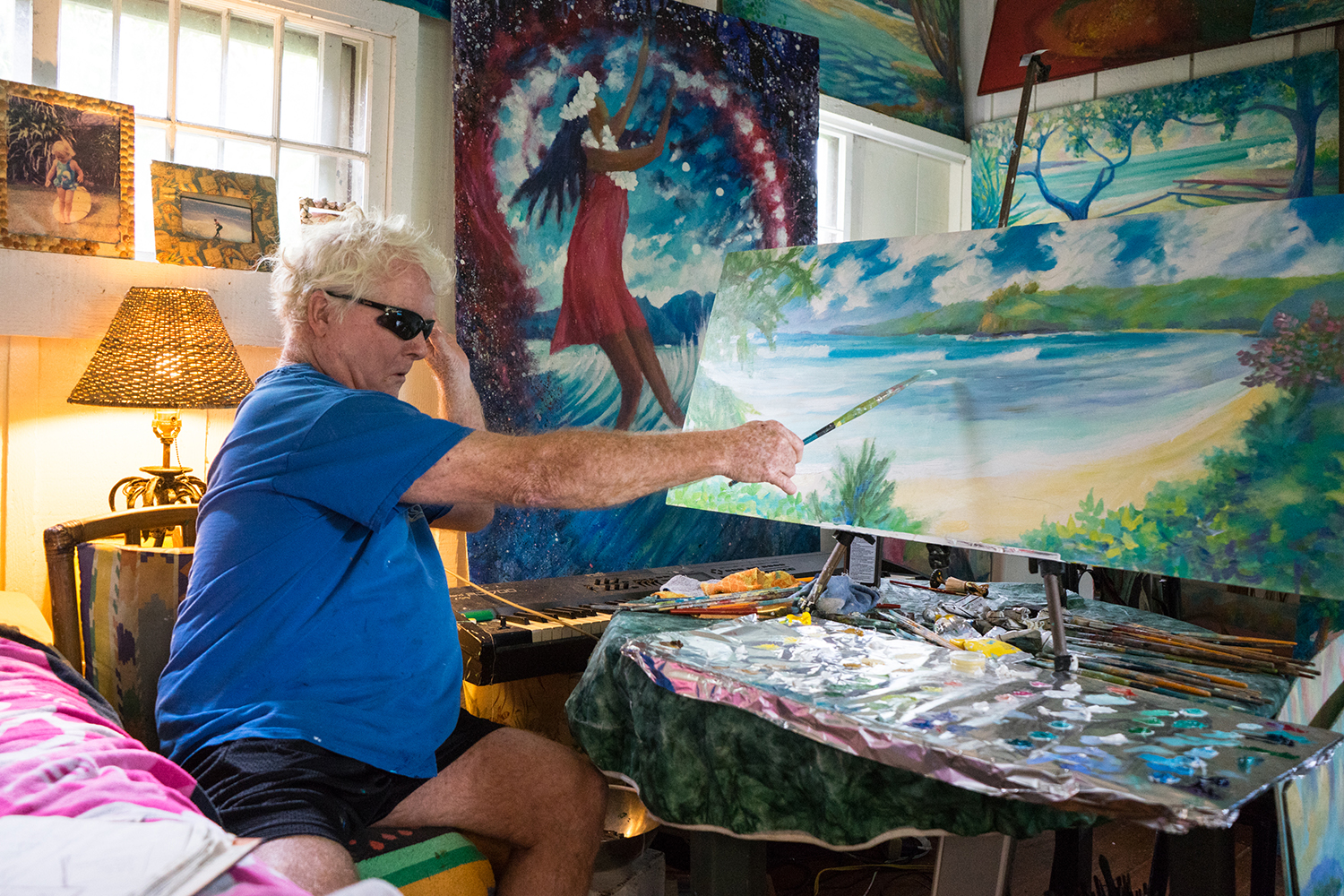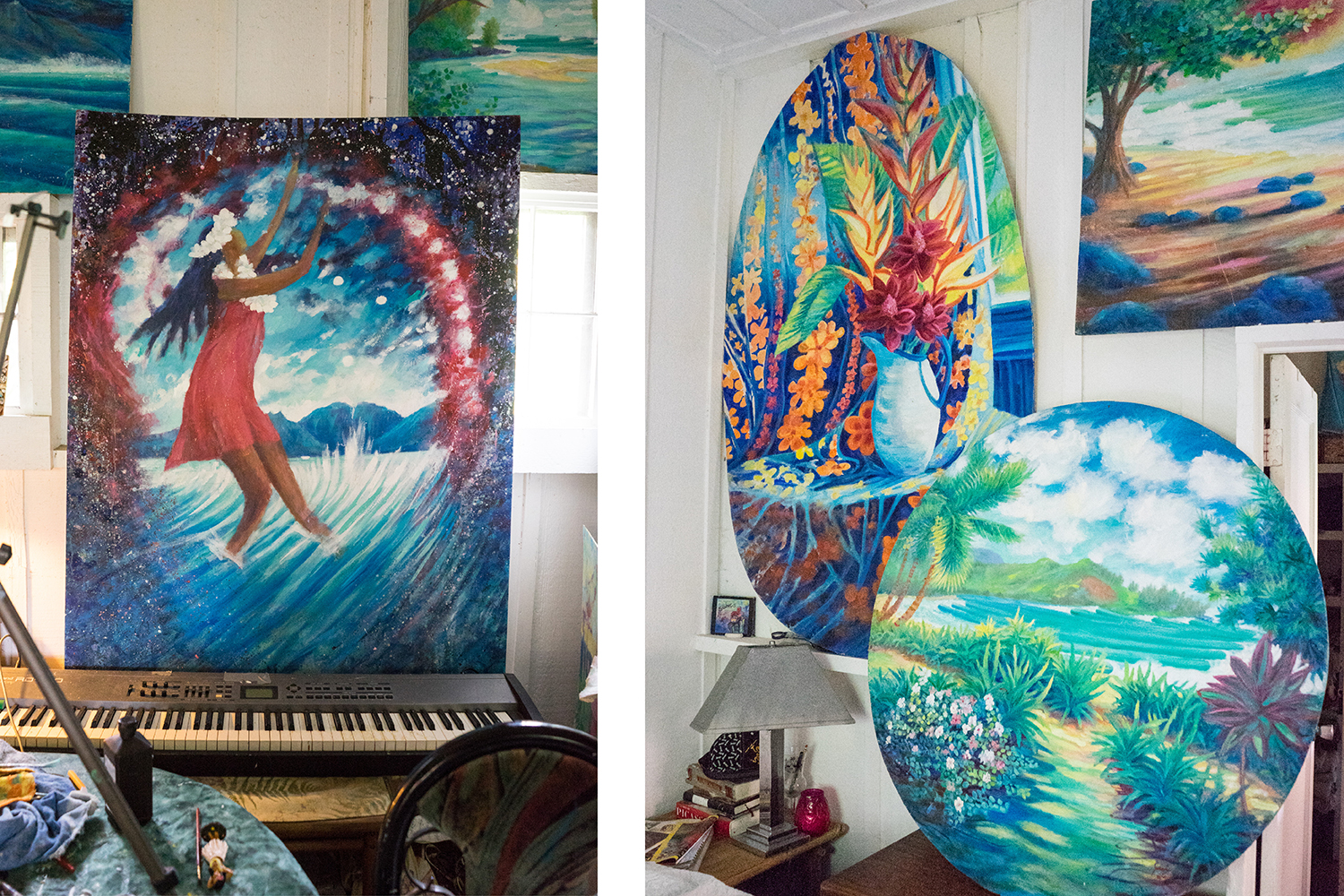Let’s start way back. Where did you grow up and when did you start surfing?
I grew up in Torrance, 10 miles inland. It was my brother Bill who started surfing first—on these really heavy Balsa woods boards. He was in his late teens, I was 10. I remember going with Bill to Greg Noll’s garage in 1958 to pick up Bill’s board. It was $88. That was a lot of money for us! I remember my dad had a big boat shack in the back of our house and Bill and his friends would bring the balsa boards in there and they would cut a big rectangle in the deck just big enough to resin in a bull fighting poster they got from Tijuana, then glass over it. That was the in thing then. I’d go to Torrance Beach with my brothers [Jim was one of nine kids—7 brothers, 2 sisters] in the summer of ‘58, and borrow their 40-pound boards. There were even some of those plywood box boards then that I rode. They were gigantic. When foam blanks came about the next year, that’s when I really started.
So how did you end up in Hawaii?
Bill went to Hawaii in 1959 and he came back with all these pictures of a sunset at Haleiwa, with him and his friend surfing. When he showed us those, we all knew we were going there. After that, when my mother would ask what kind of salad dressing we wanted, we would all always joke “thousand islands”—Hawaii was always on our minds.
On the day of my high school graduation, I walked out of there with my suit still on, and hitchhiked to San Diego. I knew all the guys down there from doing from contests. I ended up spending 6 months there, living with Skip Frye, hanging out Mike Hynson and all those guys. I was out at New Break this one day, and I see this guy come across and do a floater across the lip like I’d never seen before. I paddled up to him and asked, “Where did you learn to surf like that?” And he said, “Hanalei Bay, it’s this really fast wave. You’ve got to go there some time.” That planted the seed.
I went back to L.A. and worked the graveyard shift at a steel mill in L.A. to make money, then took off to Mexico for a while. I was wandering around—it was the hippy era. Then with the war, I got this conscientious objector job in L.A. working in the cafeteria at a hospital. I had that job for two years—or else I would have already been in Hawaii! On weekends, I’d ride my motorcycle up and surf Rincon for my two days off, then go straight to working the graveyard shift all night with my eyes barely open.
Anyway, as soon as I was done, in 1969, I moved to North Shore [of O’ahu]. My brothers Phil and Bill were there. Me and Phil started a surfboard shop in the garage. We started getting all these orders—people thought we were Rick Irons, who was really well-known at the time for surfing and shaping. We didn’t have a clue how to shape boards. We just were winging it, and barely pulling it off. Eventually we moved the shop to Velzyland and had shapers who would show up from the mainland to surf and give us lessons.
When did you move to Kauai?
A few friends and I went to Kauai in Spring of 1970. We got a taxi from the airport to the end of the road in Ha’ena. It was 20 bucks for four of us with our giant longboards. We got there at dark and I didn’t feel safe camping right there by the road, so we walked back into the bushes and camped. When we woke up, there were all these naked people in tree houses. We were at Taylor Camp.
I ran into a friend I knew, and stayed in his treehouse in Taylor camp for six weeks. I walked all the way to Hanalei [8 miles] with my board when there was surf because there were no cars. The waves were phenomenal.
When I got back to Oahu, I told Bill how cool it was, and he packed his bag and moved over to Kauai that summer. I followed him over soon after.
